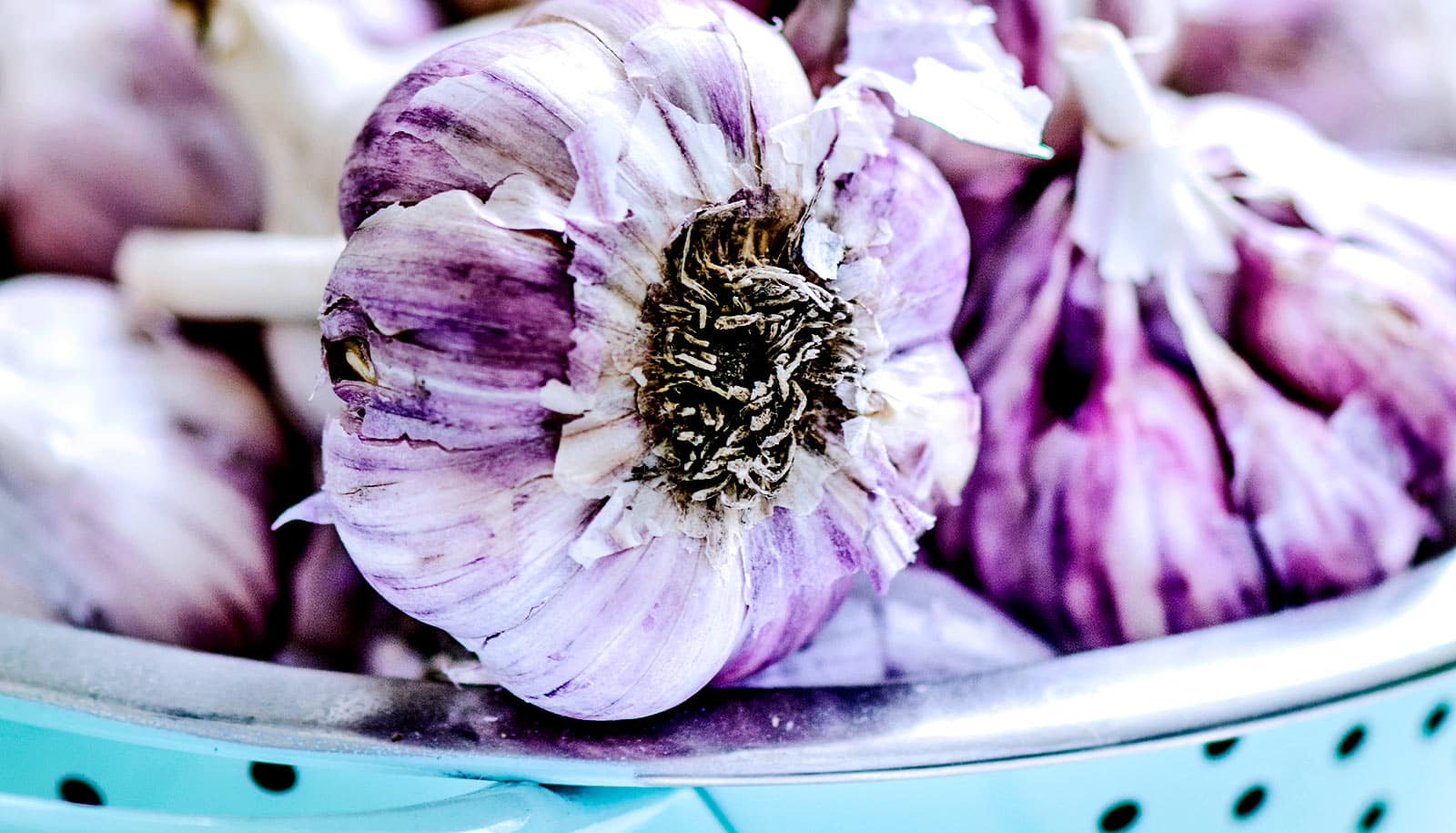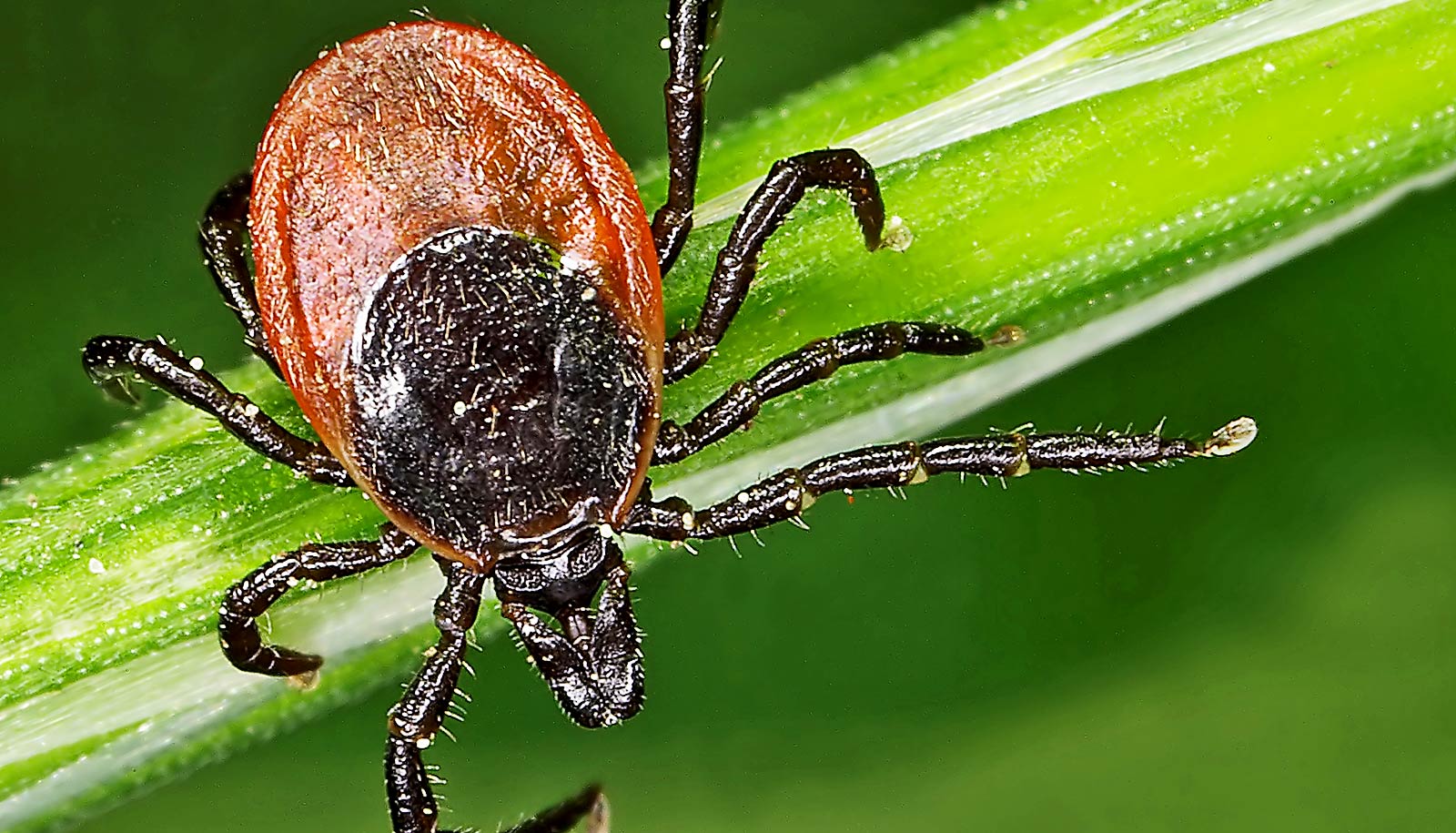
(Credit: Getty Images )
Garlic oil beats antibiotics at killing Lyme bacteria
"…these essential oils were even better at killing the 'persister' forms of Lyme bacteria than standard Lyme antibiotics."
Oils from garlic and other common herbs and medicinal plants may be useful against Lyme disease symptoms that persist despite standard antibiotic treatment new lab-dish testing shows.
Researchers tested essential oils—oils pressed from plants or their fruits that contain the plant’s main fragrance, or “essence.”
Ten of the oils, including those from garlic cloves, myrhh trees, thyme leaves, cinnamon bark, allspice berries, and cumin seeds, showed strong killing activity against dormant and slow-growing “persister” forms of the Lyme disease bacterium, researchers found.
“We found that these essential oils were even better at killing the ‘persister’ forms of Lyme bacteria than standard Lyme antibiotics,” says Ying Zhang, professor of molecular microbiology and immunology at Johns Hopkins University’s Bloomberg School of Public Health.
Fatigue and joint pain
There are an estimated 300,000 new US cases of Lyme disease each year. Standard treatment with doxycycline or an alternative antibiotic for a few weeks usually clears the infection and resolves symptoms.
About 10 to 20 percent of patients, however, report persistent symptoms, including fatigue and joint pain. This “persistent Lyme infection” or “post-treatment Lyme disease syndrome” in some cases can last for months or years.
Scientists don’t know the cause of this lingering syndrome—but it is known that cultures of Lyme disease bacteria, Borrelia burgdorferi, can enter a so-called stationary phase, in which many of the cells divide slowly or not at all. The slow-dividing or dormant “persister” cells, which can form naturally under stress conditions, are more resistant to antibiotics.
New champion
Researchers have looked for other drugs or medicinal compounds that can kill persister Lyme bacteria for years, hoping to use them to treat people with persistent Lyme symptoms.
In 2014, Zhang’s lab screened FDA-approved drugs for activity against persister Lyme bacteria and found many candidates—including daptomycin, used to treat MRSA—that had better activity than current Lyme antibiotics.
They reported in 2015 that a three-antibiotic combination—doxycycline, cefoperazone, and daptomycin—reliably killed Lyme persister bacteria in lab dish tests.
In a 2017 study, they found that essential oils from oregano, cinnamon bark, clove buds, citronella, and wintergreen killed stationary phase Lyme bacteria even more potently than daptomycin, the champion among tested pharmaceuticals.
Beyond the lab
For the current study, Zhang and colleagues extended their lab-dish testing to include 35 other essential oils, finding 10 that show significant killing activity against stationary phase Lyme bacteria cultures at concentrations of just one part per thousand.
At this concentration, five of these oils, derived respectively from garlic bulbs, allspice berries, myrrh trees, spiked ginger lily blossoms, and may chang fruit, killed all stationary phase Lyme bacteria in their culture dishes in seven days, so that no bacteria grew back in 21 days.
Oils from thyme leaves, cumin seeds, and amyris wood also performed well, as did cinnamaldehyde, the fragrant main ingredient of cinnamon bark oil.
Lab-dish tests such as these represent an early stage of research, but Zhang and colleagues hope to soon test essential oils in live animals, including mouse models of persistent Lyme infection. If those tests go well and the effective doses seem safe, Zhang expects to organize initial tests in humans.
“At this stage, these essential oils look very promising as candidate treatments for persistent Lyme infection, but ultimately we need properly designed clinical trials,” he says.
Infected ticks spread Lyme disease to humans. Typical symptoms include fever, headache, fatigue, and a characteristic skin rash, the Centers for Disease Control and Prevention say. Untreated, infection can spread to joints, the heart, and the nervous system.
The study appears in the journal Antibiotics. The Global Lyme Alliance, LivLyme Foundation, NatCapLyme, and the Einstein-Sim Family Charitable Foundation funded the work.
Source: Johns Hopkins University
The post Garlic oil beats antibiotics at killing Lyme bacteria appeared first on Futurity.
Share this article:
This article uses material from the Futurity article, and is licenced under a CC BY-SA 4.0 International License. Images, videos and audio are available under their respective licenses.


